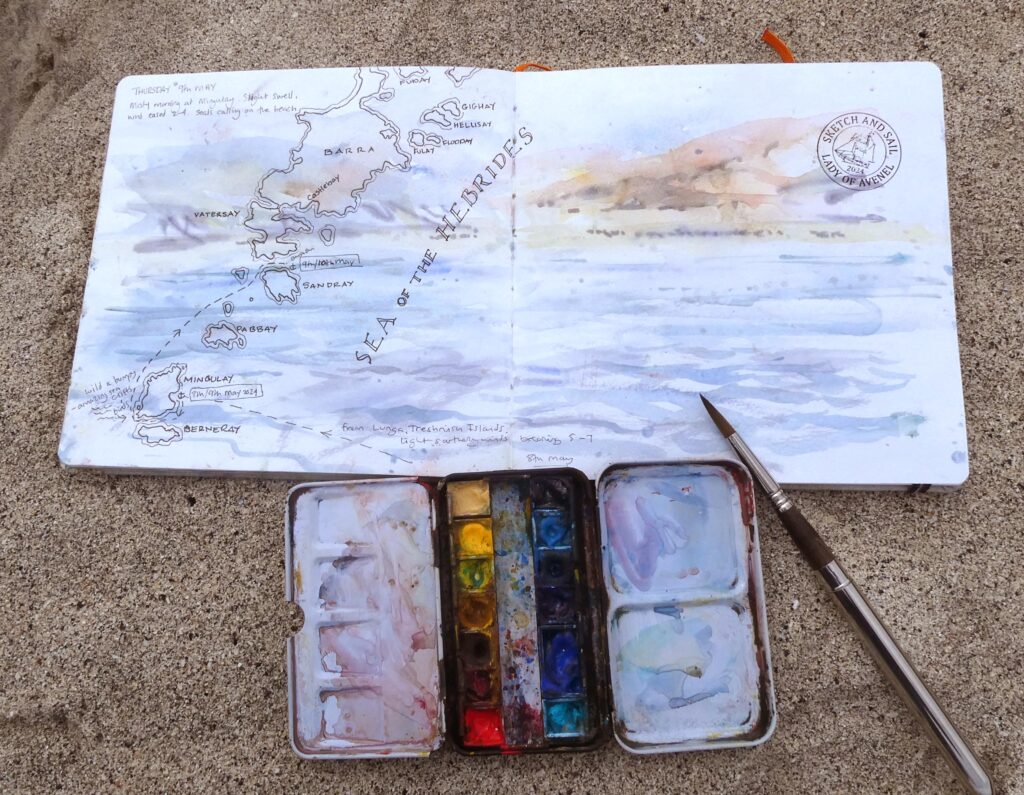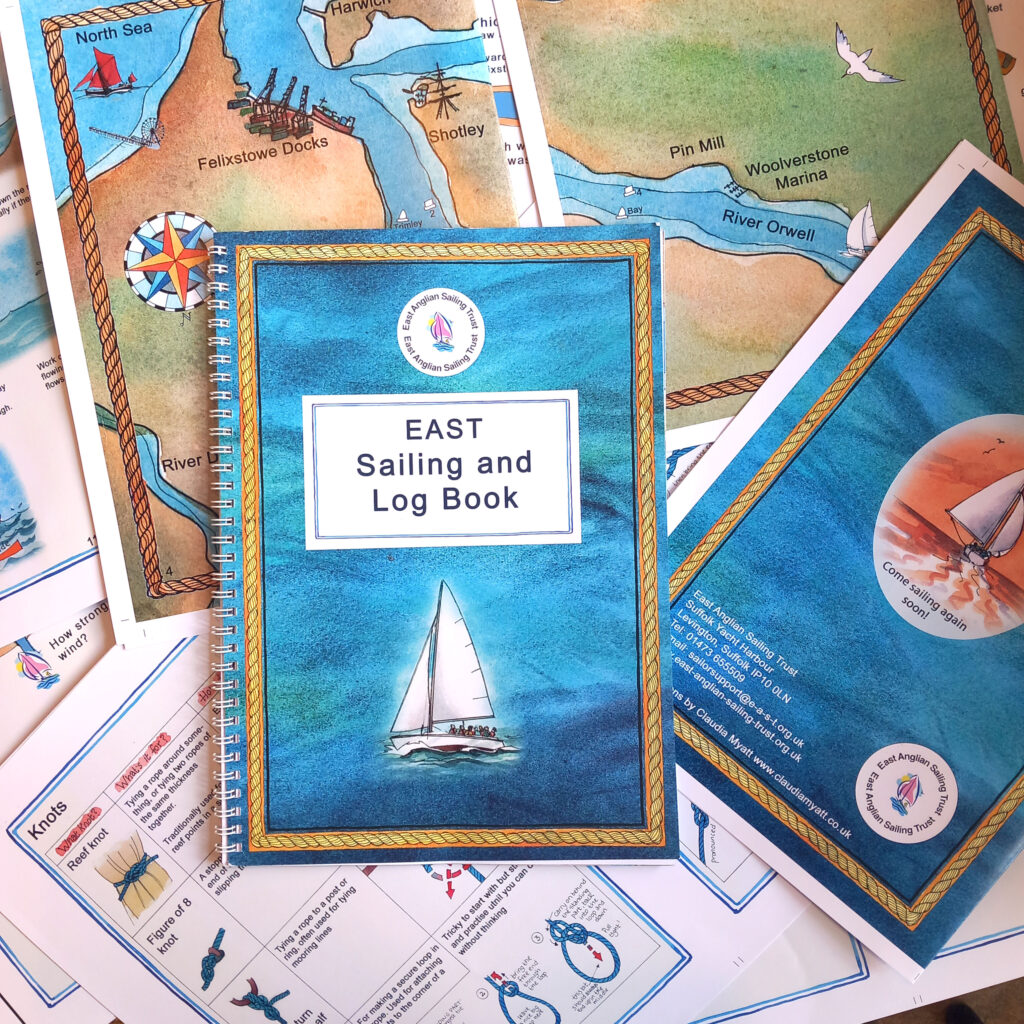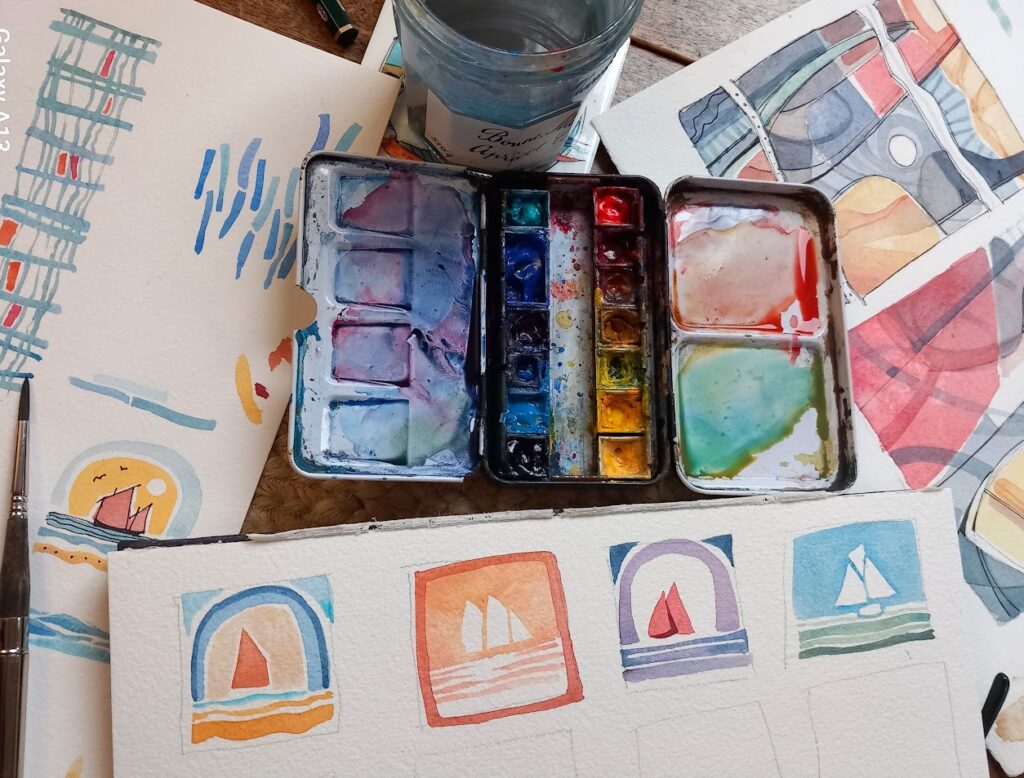Waves, water and wild places
The wind was rising and the Captain called for the t’gallants to be furled. Two of us ran down the leeward deck to get buntlines and clewlines ready. At the shout of ‘Heave away!’ we pulled hard; the sail was full of wind so I took a turn around the pin and leaned my weight on the lines. The deck was awash, the scupper ports rattling as the ship rose to each wave. Then she lurched to a bigger wave which poured over the rail. My crewmate and I both jumped, swinging from the ropes we were hauling as the wave swept down the deck. We laughed as we landed back knee deep in water – no chance of dry feet in this weather!
When I was a child I read a book about a young boy on a ship jumping into the rigging to avoid a wave which was sweeping down the deck. It might well have been Edward Ardizzone’s ‘Little Tim and the Brave Sea Captain’ – such wonderful illustrations! You can see why I thought I’d stepped into a well loved book whilst furling those sails; there’s something timeless about sailing a square sailed ship, especially when you are approaching a remote Scottish island. The hills of Mingulay were shrouded in mist as we anchored in the bay, with two anchors down as the wind was still strong. Over the sound of wind and waves came the call of seals, dark shapes on the sandy beach.
This was ‘Sketch and Sail’ on the brigantine Lady of Avenel, a great combination of traditional sailing ship, extraordinary scenery and the chance to capture the whole experience in a sketchbook journal. What a week of contrasts we had, from puffins on the cliffs to dolphins circling the ship at breakfast time; from wild weather in the Hebridean sea to sunshine on the beach of an uninhabited island. In the spacious cabin we had art workshops, plenty of good food, a warm fire on chilly nights, a bit of music and plenty of laughter.
Our guests were all women this time, many of them (me included) no longer young and nimble, but under the spell cast by the special magic of traditional sail we were all sailors, stoic in the face of seasickness, thrilling to the swoop and roll of a ship under full sail and enjoying the privilege of being the only ship at anchor in a bay surrounded by sea birds. There were some experienced artists and some beginners, but everyone took the chance to fill sketchbooks in their own unique way.
If you fancy joining a Sketch and Sail then there’s another one in October this year, led by Alice Angus and Jane Northcote. We’ll do more next year and I’ll let you know dates when we have them. We can’t promise wild waves on the deck but we can guarantee plenty of extraordinary scenery and sketchbook inspiration.
It was good to be away at sea after a long winter. My life is more varied than many, I know, but most of the time all I do is routine stuff – go to work, makes lists, draw things, faff around on photoshop, spend hours on the computer whilst failing to answer most of my emails, then go home. But it has been a surprisingly busy year.
One project just completed is a booklet for the East Anglian Sailing Trust which provides regular sailing opportunities for disabled youngsters and adults. I worked with them to produce a book to help their sailors to get more from their time afloat – information on winds and tides, boat bits, puzzles, safety advice and pages to log their sailing time. The idea was inspired by my previous sailing books – RYA Go Sailing and the Log Book for Children – but simplified and tailored to the needs of the Trust. There are many charities like EAST that do so much to make sailing accessible, and I salute all the volunteers who make it all possible.
But back to sketching… what is it about scribbling in a sketchbook that’s so good for us? Tomorrow morning I’m doing a workshop with a local art group on ‘Sketchbook Secrets’, looking at different ways of using a sketchbook, why it’s so easy to do and yet somehow so easy not to do. For me, sketching is like gardening. You tend a garden, spend time with it and plant seeds if you want good things to grow. A sketchbook is where you grow ideas, memories, make thoughts visible, and then have something good to look at through your creative window. If I nourish and tend my sketchbook garden, then it in turn will nourish me, keep the inspiration going. But the empty page can be very daunting, so here’s the list I’ll be giving the group tomorrow to get them going… and remember, it’s only paper!
Reasons to sketch:
– to keep a visual diary – to work out ideas for a painting – to slow down and enjoy a new or familiar place – to study something in detail – to work out a design (garden, house, making something) – to pass the time when bored – to understand how something works – to create memories – to practice drawing and painting skills – to experiment with new materials or colours – to enjoy using line, colour, brush, drawing tools – to do something that is totally absorbing and takes you away from everyday busyness
Techniques to help you fill those pages:
1. Draw or paint different sized rectangles on the page, then fill each one with a small drawing or painting as you go through the day. Use the spaces between the squares for words if you want to, or fill them with colour.
2. Add a coloured border to a page or a bar of colour and pattern to the edge.
3. Tear or cut the edge of a page and then play around with adding colour to the edge and onto the page below
4. Leave the pencils alone for a week and use materials that you don’t usually use for drawing – coloured pencils, marker pens, oil pastels, brush, print making
5. Choose a colour a day for a week and doodle or paint in shades of that colour. (Or choose a colour a week if you prefer!)
6. Try different sized sketchbooks – buy a tiny one and a big one and see what they feel like to use.
7. Doodle, in line and/or colour.
8. Focus on a different theme each day – spoons, fabrics, shoes, food, leaves, a poem…
9. Chop up fragments of failed paintings and create collage on the page – new ideas might emerge!
10. Try and do a sketch a day for a week… a month… or a year! Above all, enjoy it.







